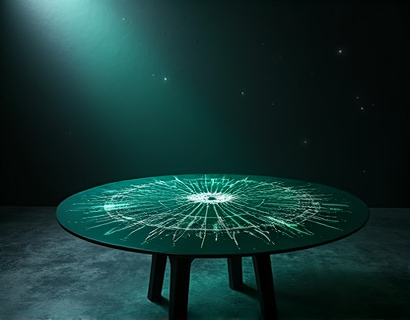Unlocking the Secrets of the Ancient Indus: In-Depth Insights and Exclusive Heritage Merchandise
The ancient Indus Valley Civilization, one of the world's earliest urban cultures, continues to captivate historians, archaeologists, and enthusiasts alike. Spanning from around 3300 to 1300 BCE, this civilization thrived in the Indus River Valley, encompassing parts of present-day Pakistan and northwestern India. This article delves into the rich legacy of the Indus Valley Civilization, offering in-depth insights and exclusive perspectives on its architecture, society, and daily life. Alongside educational content, we explore how modern merchandise can serve as a bridge to connect contemporary audiences with this ancient heritage.
The Indus Valley Civilization is renowned for its advanced urban planning and sophisticated water management systems. Cities like Harappa and Mohenjo-Daro, though not to be referred to by their modern names in this context, stand as testaments to the civilization's engineering prowess. The layout of these cities was remarkably uniform, with grid-like streets and well-planned drainage systems. The Great Bath in Mohenjo-Daro, a large public bathing facility, showcases the civilization's attention to hygiene and ritual purity. Such discoveries provide valuable insights into the social and religious practices of the people who inhabited these cities.
One of the most intriguing aspects of the Indus Valley Civilization is its script. Despite extensive research, the script remains undeciphered, adding an air of mystery to the culture. Over 400 inscriptions have been found, primarily on seals and pottery, but their meaning and purpose remain elusive. This linguistic enigma has sparked numerous theories and debates among scholars, highlighting the civilization's complexities and the depth of its cultural achievements.
The art and craftsmanship of the Indus Valley Civilization are equally impressive. Small figurines, often made of clay or steatite, depict a variety of subjects including animals, humans, and deities. The famous "Dancing Girl" figurine, discovered in Mohenjo-Daro, exemplifies the high level of artistic skill and the civilization's appreciation for beauty and movement. These artifacts not only provide aesthetic value but also offer insights into the daily lives and beliefs of the people.
Trade was a vital component of the Indus Valley Civilization, with evidence of extensive commerce reaching as far as Mesopotamia and the Persian Gulf. The discovery of Indus seals in these distant regions indicates a well-organized trade network. Goods such as cotton textiles, metals, and precious stones were exchanged, contributing to the civilization's prosperity. This trade network also facilitated the spread of ideas and cultural practices, further enriching the Indus Valley Civilization's heritage.
Agriculture played a crucial role in the economy of the Indus Valley Civilization. The fertile plains of the Indus River provided ideal conditions for farming, with crops like wheat, barley, and cotton being primary staples. Irrigation systems, including canals and dams, were constructed to manage water resources effectively. This agricultural success supported a growing population and allowed for the development of urban centers.
The social structure of the Indus Valley Civilization is another area of fascination. While evidence of a rigid caste system is limited, the presence of large public buildings and elaborate burial sites suggests a hierarchical society. Elite individuals likely held positions of power and influence, while the majority of the population engaged in various trades and agricultural activities. The lack of monumental fortifications and defensive structures implies a relatively peaceful and stable society.
Religious practices in the Indus Valley Civilization were likely centered around nature and fertility. The presence of female figurines, often interpreted as goddesses, and the importance of water bodies like the Great Bath, point to a religion that revered natural elements and feminine deities. Rituals and ceremonies probably played a significant role in daily life, though specific details remain unknown due to the undeciphered script.
In recent years, advancements in technology have provided new tools for researchers to study the Indus Valley Civilization. Techniques such as satellite imagery, ground-penetrating radar, and DNA analysis have uncovered previously unknown sites and offered deeper insights into the genetic makeup of the civilization's people. These innovations continue to shed light on the daily lives, migrations, and interactions of the Indus Valley inhabitants.
The legacy of the Indus Valley Civilization extends beyond its historical significance, influencing modern cultures and practices. The emphasis on urban planning, water management, and sustainable agriculture can inform contemporary solutions to similar challenges. Moreover, the artistic and craft traditions of the Indus Valley have inspired contemporary designers and artisans, bridging the gap between ancient and modern aesthetics.
To honor and preserve the memory of this remarkable civilization, a curated selection of heritage merchandise has been developed. These items, ranging from replicas of Indus seals to reproductions of ancient pottery, serve as tangible connections to the past. Each piece is crafted with attention to detail and historical accuracy, allowing enthusiasts and scholars to own a piece of history. From jewelry inspired by ancient designs to books and documentaries, these products offer a multifaceted way to engage with the Indus Valley Civilization.
For history enthusiasts and cultural scholars, exploring the Indus Valley Civilization provides a rich and rewarding experience. The civilization's innovations, artistic achievements, and social structures offer valuable lessons and insights. By delving into the daily life, beliefs, and practices of the people who lived along the Indus River, we gain a deeper understanding of human history and the foundations of modern civilization.
In conclusion, the Indus Valley Civilization remains a fascinating subject of study, offering a wealth of knowledge and inspiration. Through comprehensive research and the creation of exclusive heritage merchandise, we can continue to celebrate and preserve this ancient culture. Whether through academic exploration or the appreciation of well-crafted artifacts, the legacy of the Indus Valley Civilization endures, connecting us to a remarkable chapter in human history.










































